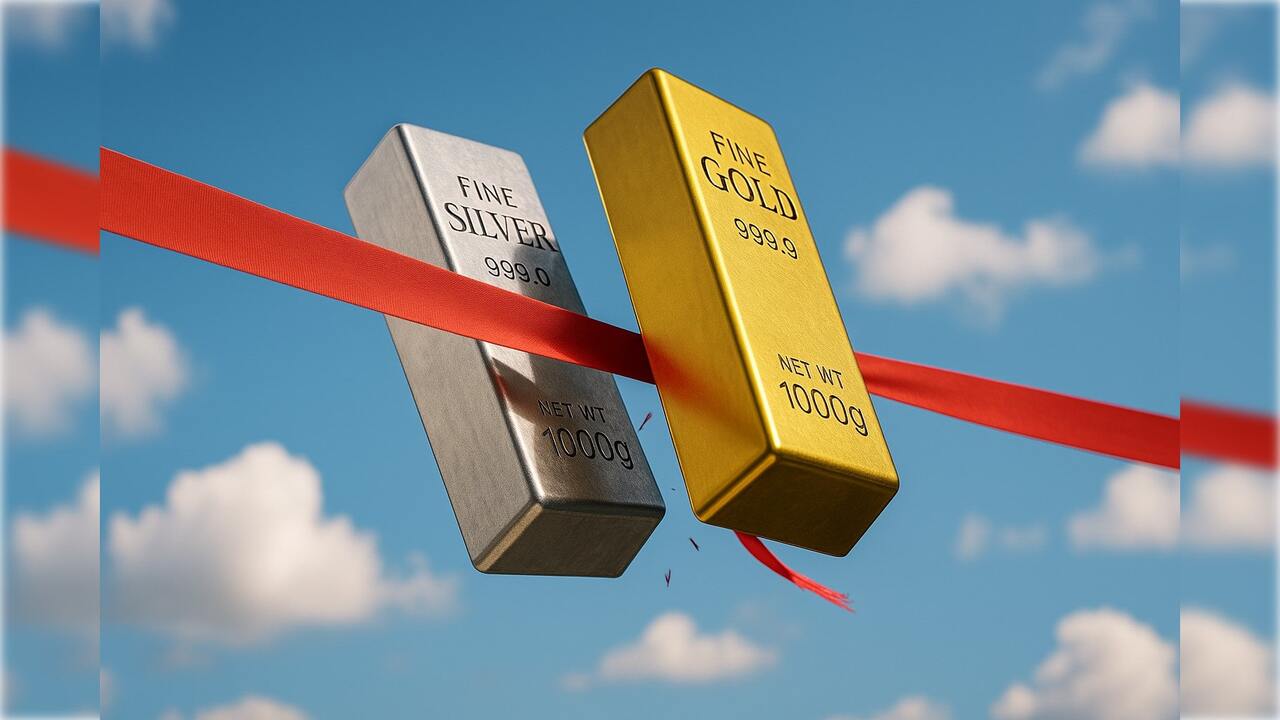(Money Metals News Service) In the latest episode of the Money Metals podcast, host Mike Maharrey welcomes Peter Krauth—veteran resource market analyst, publisher of Silver Stock Investor and Silver Advisor, and author of The Great Silver Bull.
Together, they explore the rapid acceleration in gold prices, silver’s current lag, and why both metals may be poised for significant moves in the coming months and years.
(Interview Starts Around the 4:48 Mark)
Gold Hits $3,000 in Record Time
Gold’s recent price action has stunned even seasoned market watchers. The metal surged from $2,500 to $3,000 in just 210 days—an unprecedented move considering that past $500 price milestones took an average of 1,700 days.
Krauth expressed a mixture of surprise and validation.
While long-term bulls have anticipated such a breakout, the velocity and durability of the move have exceeded expectations. He noted that multiple global factors are creating the conditions for gold’s strength and argued that we remain in the early stages of a larger bull market.
Silver: Lagging But Loaded with Potential
The big question on many investors’ minds is, “What’s wrong with silver?”
Krauth’s answer: “Absolutely nothing.”
Silver is behaving in line with its historical pattern, trailing gold in the early stages of a bull cycle. Importantly, the gold-to-silver ratio remains near historically elevated levels, currently around 90:1, far above its long-term average of 55 to 60.
Krauth emphasized that this imbalance will eventually correct—and when it does, silver tends to move violently to the upside.
He acknowledged that some industrial headwinds, such as tariffs and economic uncertainty, may be tempering silver’s price, but those same conditions are also setting the stage for future gains.
History shows that during past Federal Reserve rate-cutting cycles, silver has delivered gains exceeding 300% within one to two years.
Industrial Demand vs. Investment Demand
Silver’s dual identity as both an industrial metal and a monetary asset adds complexity to its price behavior.
Over the past decade, industrial demand has grown from about 50% to nearly 60% of overall usage, largely due to solar panels, electric vehicles, and green energy technologies. This shift means there’s now less silver available for investment.
Krauth pointed out that when investor demand does come roaring back—as it often does during bull markets—the reduced available supply could send prices soaring. He sees the industrial base as providing a rising and more stable floor for silver prices, while investment demand brings in volatility and explosive upside potential.
Bullish Technical Signals: $50+ in Sight?
Technically, silver may be setting up for one of the most powerful breakouts in market history.
Krauth referenced the multi-decade “cup and handle” formation in silver, stretching back to the $50 highs of 1980 and 2011.
He cited technical analyst Jordan Roy-Byrne, who argues that a breakout above $35 to $37 would be significant, while a breakout past $50 would mark entirely new territory.
Such a move could catapult silver to $70, $80, or even $100 in a short time span. Krauth agrees with this view, emphasizing that even if one doesn’t trade technically, many investors do—and that alone makes such breakouts meaningful.
Monetary Policy, Tariffs, and Regime Uncertainty
Krauth and Maharrey both observed that gold’s rally has unfolded even without a dramatic loosening of monetary policy. This indicates the market may be anticipating a major economic event or crisis.
Krauth believes the Federal Reserve is cornered by soaring deficits and high interest rates, and when it inevitably cuts rates in the face of ongoing inflation, it will lose its remaining credibility.
This could trigger a massive move into gold—and then into silver, as investors look for more affordable alternatives. Krauth sees silver potentially reaching $40 by the end of 2025 and breaking through its all-time high of $50 sometime in 2026.
Since the recording of this interview, the White House has released its tariff plans. Gold and silver bullion, along with other precious metals and copper, will not have a tariff.
Government Support and the Green Transition
Government policy is creating sustained demand for silver, particularly through green energy initiatives. Krauth pointed to recent data showing that renewable energy has surpassed coal for electricity generation in the United States for the first time.
Solar panels, a major consumer of silver, are becoming more efficient, with newer technologies requiring up to 50% more silver per panel. He also noted that Europe is aggressively spending on both rearming and the green economy, with Germany proposing a €900 billion package for defense and climate-related infrastructure.
Additionally, governments across Canada, Australia, and Europe are moving to streamline mining approvals to accelerate domestic production.
All of this points to a structural increase in silver demand in the years ahead.
Krauth’s Silver Price Forecast
Looking ahead, Krauth is highly optimistic. He believes a $40 silver price later this year is realistic and sees strong odds that silver will test or break its all-time high of $50 in 2026.
If gold continues to climb—possibly reaching $3,500 or $4,000—investors will likely shift attention to silver, which still offers more ounces per dollar.
This relative value, combined with limited supply and rising demand, could create the perfect conditions for a major silver bull run.
Where to Follow Peter Krauth
Peter Krauth offers a range of resources for investors. His paid newsletter, Silver Stock Investor, is available at silverstockinvestor.com. He also publishes a free newsletter, Silver Advisor, featuring lower-risk, more advanced companies, which you can subscribe to at thegoldadvisor.com/registration.
His book, The Great Silver Bull, provides a comprehensive yet accessible overview of the silver market, ideal for both new and seasoned investors. You can follow him on X (formerly Twitter) at @PeterKrauth and connect with him on LinkedIn.
Final Takeaway
The message from this episode is clear: Gold may be leading the charge, but silver is gathering strength beneath the surface.
With tight physical supplies, government-fueled industrial demand, and bullish technical setups converging, investors may want to prepare now—before silver’s breakout comes hard and fast.

